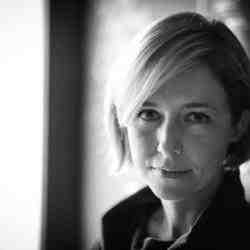Introduction
Dennis Karpes has built one of the world’s most powerful global brands—Dance4Life is harnessing the energy and entrepreneurship of hundreds of thousands of young people around the world, inspiring them to take action in the fight against HIV/AIDS, and more broadly, for social change. This critical mass has already dramatically shifted the image and experience of youth in 20 countries and will, in the years to come, deeply redefine the youth years around the world.
The New Idea
As a marketing specialist, Dennis has witnessed firsthand the power of branding to influence the behavior and the social patterns of large groups in society, especially youth. Combining his marketing expertise with his awareness of the potential power of a group representing more than half of the world’s population, Dennis built Dance4Life as a powerful global brand for positive, youth-led social change. His targeted message, adjusted packaging, innovative delivery channels, global partnerships with brands and international stars, and massive celebratory events that gather agents of change around the world have allowed societies to harness the power of young people to foster a global youth corps that is equipped to understand problems, find creative solutions, and lead concrete actions against one of the world’s most pressing issues: HIV/AIDS.
Behind the brand is a product. Dennis wants all teenagers to embrace social change and join the Dance4Life movement. He began by focusing on one concrete issue, HIV/AIDS, because it is easily understood, accessible, and actionable for young people across the world. Dennis established a team to design a simple yet powerful and attractive step-by-step information-to-action training and coaching program, through which any young person can effectively find the confidence, motivation, and tools to become agents of change. First attracted and enthused by the marketing and large events, young people find support through their school, local Dance4Life branches, partner organizations, and franchisees.
By bringing hundreds of thousands of entrepreneurial and socially active youth together in a movement from a variety of contexts, and by using events and technology to connect them, Dennis is fostering a powerful counterweight to the uneven distribution of power in the world. These youth will lead their generation toward a more democratic, entrepreneurial, and socially responsible direction. They are already shifting adults’ attitudes, as schools and parents allow them to be entrepreneurial and to talk more openly about the taboo subject of HIV/AIDS.
So far, over 300,000 teenagers have been through the transformative Dance4Life experience, including launching their own actions against HIV/AIDS (i.e. awareness raising, advocacy, peer-to-peer training, and fundraising). They have celebrated their successes with their peers and developed an understanding of their own power to generate social impact, which will influence the rest of their lives. Dance4Life plans to reach 1 million young people by 2014, and broaden the movement to target other UN Millennium Development Goals.
The Problem
Currently, 80 percent of global wealth belongs to 20 percent of the world’s population; reflecting a profound imbalance of power in modern societies. Those with power create and perpetuate systems that limit others upward mobility, especially those in lower social classes. This imbalance is repeated generation after generation: Privileged children have access to a better education and to activities that develop their autonomy and entrepreneurial skills, while those in more disadvantaged groups have fewer opportunities to develop their full potential.
The education and youth sectors are not effectively combating this system. While teachers and educators transfer knowledge and skills to youth, they rarely offer youth real responsibility, nor do they allow them to be entrepreneurial or take leadership. Young people can be participants, attendees, or program deliverers, but not entrepreneurs, leaders, or system-changers. Thus, most attempts to engage youth with social change are neither convincing nor appealing.
This is a missed opportunity in a fast-paced, complex world filled with social challenges. We need more and more changemakers, people able to invent and implement innovative solutions. Multiplying youth-led social ventures is beneficial not only to emerging youth leaders, but also to the target audiences: Other youth (who become inspired) and adults (who witness their children’s potential and understand the need to support their activities).
The Strategy
On one hand, Dennis’ goal is to foster stories of young people changing the world to inspire others; on the other hand (and more importantly), he works to make change-making appealing and accessible to 13-to-19-year-olds around the world. This is because young people who launch their own ventures—social or business—acquire invaluable change-making skills that they are able to apply throughout their lives. These skills include entrepreneurialism, empathy and social skills, leadership, teamwork, self-esteem, and a strong sense of responsibility and personal potential.
By effectively marketing a massive global youth movement of changemakers, Dennis has built Dance4Life as a youth brand for change-making, with the goal of making social entrepreneurship an appealing option and building a community of powerful “agents of change.” To make the brand simpler, stronger, and most accessible, he has focused calls for change around the issue of HIV/AIDS—a widespread, generational problem of pressing urgency against which youth can easily take action and see their impact. He has also designed a virtuous marketing cycle based on peer-to-peer inspiration and mass marketing. The core elements of this cycle include:
o Through large campaigns centered around events gathering together young agents of change and world-famous artists in nearly 20 countries, Dance4Life demonstrates youth engagement and tells the stories of hundreds of thousands of actively engaged teenagers;
o All marketing materials (messages, logos, and so on) are targeted at youth;
o Dance4Life leverages youth media channels globally. In Western countries, they use TV, radio, youth press, and the Internet. In Africa and the developing world they also use schools, word of mouth, and other low-tech communication channels;
o Dennis has built partnerships with major global brands and companies such as Coca Cola, Durex, General Mills, and Doritos to aid in his marketing efforts;
o Dance4Life has a music label which produces CDs and other merchandize to make their brand mainstream and popular;
o Dennis hopes to connect all Dance4Life members through an online global community.
On the ground, Dance4Life created a step-by-step program that is distributed by local branches, franchisees, and partner organizations through local schools:
1. Schools4Life: The program begins with an in-school awareness campaign about HIV/AIDS, led by peer youth, HIV-positive teenagers and adults, and Dance4Life staff members. Through dance, storytelling, video and music, the students are educated about sexual health and sexual rights, and develop a personal connection with these issues.
2. Skills4Life: Workshops are offered to those motivated to join the movement, strengthening their self-esteem and distilling skills such as negotiation, peer-to-peer inspiration, how to talk about sex, how to overcome counter arguments, and so on.
3. Act4Life: Participants are invited to undertake concrete action for social change.
4. Dance4Life: Those who have become “agents of change” are invited to large celebratory events. They are connected to other young changemakers in their community, country, and internationally through satellite broadcasting.
Dennis is now conducting a large-scale evaluation of the impact of his program on the lives of the participants over time and on the lives of people around them. He has been carefully tracking the results of his activities: Over 30 percent of participants come up with solutions to change the perceptions and behaviors of their peers, families, and leaders, toward those with HIV/AIDS. They organize concrete events and activities that will raise awareness within their communities: Educational programs, fundraising events and activities, and communication campaigns. For example, a group of teenagers in Mexico raised funds and awareness to have free condoms distributed by the local health clinic. A team of 13-year-olds in the Netherlands created a small business to raise funds for the program, and managed to raise €4,500 (US$6,890) in their first year. The remaining 70 percent of participants help these entrepreneurs and gain an in-depth understanding of the problem and of their own their power. All of them find the Dance4Life experience life-changing, and feel better equipped to solve problems for the rest of their lives.
By 2014, Dance4Life will count 1 million members in 35 countries. The scale of the movement is showcased on Dance4Life Day (held every two years on the Saturday before World AIDS Day). On December 4, 2008, 50,000 youth engaged with celebrities in events in 19 countries and could see each other through satellite broadcasting. The movement is strongest and has reached a tipping point in the Netherlands, where the Dance4Life headquarters are located, with a team of 12 staff supporting their national and global efforts. In partnership with Stop AIDS Now, 20,000 young people have been engaged in fundraising and other youth-led activities. Youth are now seen as powerful agents in the fight against HIV/AIDS, which will only increase with the upcoming launch of the Dance4Life “reality” TV show.
Dance4Life has branches in South Africa and Indonesia, where the 20,000 “agents of change” critical mass level has been achieved, as well as in Germany. In other countries, National Concept Holders run the programs and activities. As of today, these countries are Ireland, Kenya, Mexico, Moldova, Nigeria, Russia, Sierra Leone, Tanzania, Turkey, Uganda, United Kingdom, U.S., Vietnam, Zambia, and Zimbabwe. Because Africa is especially affected by HIV/AIDS, Dennis has placed a special emphasis to develop Dance4Life on the continent.
Dance4Life is already triggering deep changes in education systems, as partner schools and organizations are displaying an increasing willingness to teach sexual health even in conservative cultures, where Dance4Life has also often succeeded in engaging religious leaders and parents. Yet Dennis sees big challenges ahead in Africa due to the extremely complex cultural, health care, and economic infrastructures. He is currently developing a targeted networking and marketing strategy to respond to the specific realities of working on HIV/AIDS in Africa.
The Person
Dennis’ life changed dramatically when he was 24 and traveled to South Africa. He was struck by the untapped energy of young people and the increasing pressure of HIV/AIDS. He started his career as a marketing manager for global clothing brands such as Big Star and Levi-Strauss, but kept traveling. Soon, Dennis’ passion and ambition turned decisively toward social change. Dennis co-created Kuyichi, a brand of organic cotton and fair trade clothes for the fair trade community organization, Solidaridad. He saw fashion as a way to open the minds of trendy youth elite to socially- and environmentally-conscious behaviors. Dennis grew Kuyichi into an internationally well-known and profitable brand.
Dennis is also a disc jockey. This expertise led to the insight that he could apply branding mechanisms to celebration and music to attract and connect young people in a large-scale movement for social change. About ten years ago, Dennis drafted the concept of a global youth event that would address social issues in a new way and empower youth to become changemakers. Along with his friend Inco Van der Linde, Dennis launched Dance4Life to fulfill this vision. Dennis focused on building the brand, while Inco created content for the movement. Inco eventually left Dance4Life in 2006.
Over the past seven years, Dennis has spread Dance4Life in 20 countries. Not only has he turned 300,000 youth into agents of change, he also engaged key leaders with his organization, including Archbishop Desmond Tutu and Peter Piot (former Vice President of UNAIDS). In 2008, Dennis was recognized as a Young Global Leader and used this recognition to expand his support network around the world.
With Dance4Life now running and growing effectively, Dennis hired someone to head their global operations and is focusing on redefining the brand (which was revamped in early 2009), and increasing Dance4Life’s impact in Africa. After the movement exceeds 1 million members in 2014, Dennis will expand Dance4Life to address each of the UN Millennium Development Goals. Dennis is creating a future world where ever more citizens are willing and prepared to play an active role in solving social problems.




